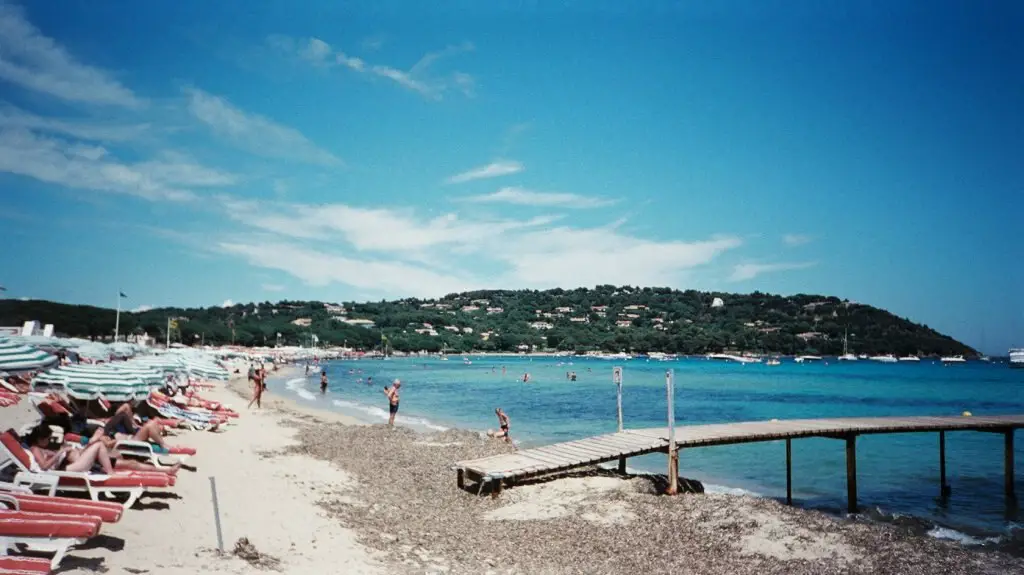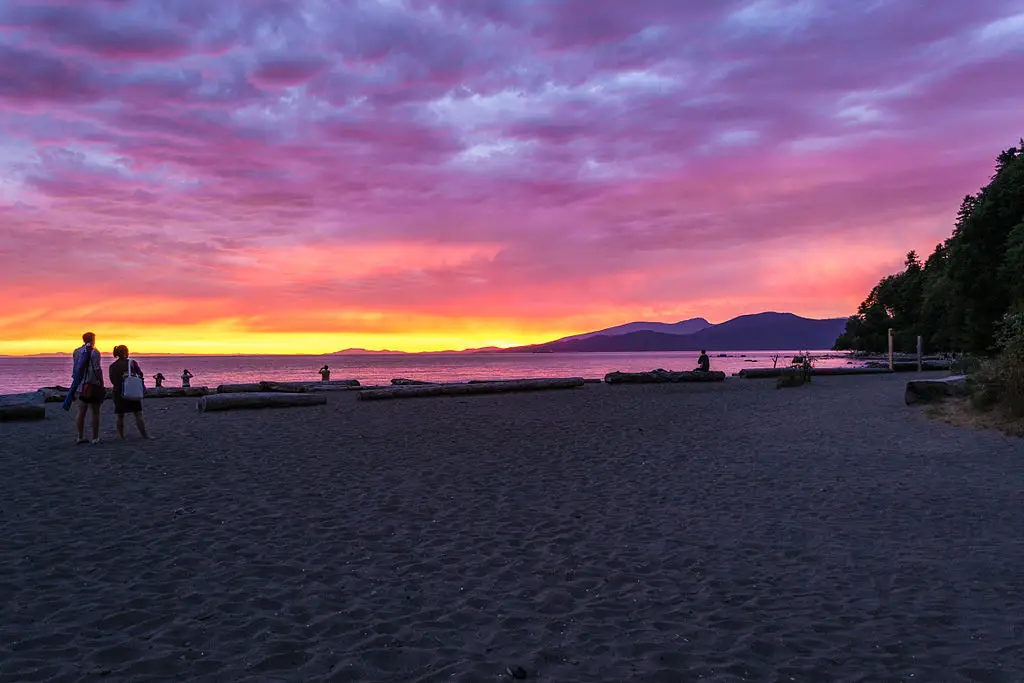Imagine lounging on a picturesque beach, with the sun gently caressing your skin and the rhythmic lullaby of ocean waves in your ear. Now, imagine doing all of this without the hindrance of bathing suits or clothes in general – welcome to the concept of clothing optional beaches. Clothing optional beach, as the phrase suggests, offers an environment where nudity or semi-nudity is permitted. With deep roots in the history and a unique set of social norms and etiquettes to follow, these beaches serve as fascinating social spaces, fueled by candid discussions and debates.
Table of Contents
Understanding Clothing Optional Beaches

What are Clothing Optional Beaches?
Clothing optional beaches, also known as nudist beaches, are public or private beaches where nudity or partial nudity is allowed. Individuals can choose whether to wear clothing or not as there are no formal rules enforced regarding this. Nudism on these beaches is seen as a form of expressing personal freedom and body positivity, often emphasizing that nudity is not inherently sexual.
History of Nudist Beaches
The concept of nudist beaches has its roots in the wider nudist movement that gained popularity in Europe in the early 20th century. The first known opening of a public nudist beach was in Germany in 1920, on the island of Sylt. However, the practice of social nudity was prevalent in ancient societies such as Greece and Rome long before that as a norm in some social and recreation settings. In the United States, the first official clothing optional beach was Haulover beach, established in Florida in 1991. The idea rapidly spread worldwide and today there are hundreds of clothing optional beaches across the globe.
Social Expectations and Etiquette on Clothing Optional Beaches
Visiting a clothing optional beach calls for adherence to certain etiquettes and social norms. Privacy is paramount; overt staring, photographing or any form of harassment is strongly discouraged and can result in expulsion from the beach. Many beaches have “clothing optional” as opposed to “nudist” to make it clear that no one is pressured into nudity. It is also a norm to bring and sit on one’s own towel for reasons of hygiene. Sexual behavior or activity is strictly forbidden on most clothing optional beaches reflecting the non-sexual nature of social nudity.
Controversies and Debates
There are various opinions concerning the appropriateness and benefits of clothing optional beaches. Critics argue that public nudity has potential to give rise to problems such as voyeurism and lewd behavior. They also worry about the possible exposure of children to nudity. Conversely, proponents of the clothing optional beach movement assert the right to personal freedom and body positivity. They argue that discouragement of nudity fuels body-shaming and stigma. Various professional studies have examined the societal impact of these beaches, however, findings remain mixed.
Legal Status
The legal status of clothing optional beaches differs from location to location. Some countries like Denmark and Spain are very liberal and have multiple clothing optional beaches. In contrast, nations like Iran and Saudi Arabia strictly prohibit public nudity. In the United States, the jurisdiction of clothing optional beaches falls under state and local ordinances, leading to a varied landscape where the acceptance of public nudity fluctuates.
For those interested in the unique experience of clothing optional beaches, it is crucial to conduct some basic research in relation to local norms and legalities. Preparation and knowledge will help ensure a comfortable and enjoyable experience at these distinctive locations.
Locations of Clothing Optional Beaches

Haulover Beach, Miami, Florida
Take for instance, Haulover Beach – a renowned clothing optional beach located in the vibrant city of Miami, Florida. This globally recognized beach draws an eclectic mix of patrons of all ages. Run by the local government, it’s accessible to the public for a relatively small parking fee of around $7. The ambience at Haulover Beach is markedly friendly and laid-back, with visitors participating in a range of activities from sunbathing to swimming. Managed facilities such as restrooms, showers, and food vendors are conveniently at hand. Moreover, the presence of lifeguards ensures the safety of all beachgoers.
Black’s Beach, San Diego, California
Next on the list is Black’s Beach in San Diego. It is renowned as one of the largest clothing optional beaches in North America, attracting many beachgoers, from university students to retirees. Expect calm waves perfect for swimming and a peaceful atmosphere owing to the beach’s secluded location. Access to Black’s Beach can be a bit of a trek – it is accessible via a steep trail – so visitors must be cautious while trekking down. The beaches are free to the public and there are no facilities available onsite, it’s suggested for visitors to bring their own essentials.
Plage de Tahiti, St. Tropez, France

When it comes to clothing optional beaches in Europe, Plage de Tahiti in St. Tropez, France is top-tier. This beach became particularly famous when it was featured in the 1956 film “And God Created Woman” with Brigitte Bardot. It is located on the more private, northern end of Pampelonne and is characterized by its serene atmosphere and azure waters. The fee to access the private beach clubs along Plage de Tahiti could range anywhere between 20 to 70 euros, but the public beach areas are free. Chic beach bars, high-end sunbed rentals, and boutiques line the beach, adding to the upscale ambience of this location.
Wreck Beach, Vancouver, Canada

Turning to Canada, Wreck Beach in Vancouver is the country’s first and largest clothing-optional beach. Stretching for over 7 kilometers, Wreck Beach has an unpretentious and casual atmosphere that attracts a mix of locals and tourists. The beach offers a magnificent view of ferries passing by and the beautiful sunset. Vendors selling food, beverages and even crafts are also available on the beach. Keep in mind that to reach this breathtaking destination, visitors will have to complete a somewhat intense hike down a long set of stairs. There are no entrance fees to enjoy Wreck Beach, although donations to maintain the cleanliness and beauty of the beach are accepted and appreciated.
Playa d’Es Cavallet, Ibiza, Spain
Ending our list, we find Playa d’Es Cavallet in the sun-soaked lands of Ibiza, Spain. This clothing-optional heaven bustles amidst the white sands of Ses Salinas Natural Park. Its status as a conservation area not only guarantees untouched beauty but also offers glimpses of thriving wildlife. The journey to the beach, charmed with sand dunes, sets the tone for the relaxed atmosphere that welcomes you. On-site amenities include a beach bar, restaurant, and rental services for sun loungers and umbrellas. However, given their limited availability, packing your own would be a wise option.
The Psychological and Social Benefits

Demystifying Clothing Optional Beaches: Embracing Body Positivity and Acceptance
Clothing optional – or nude – beaches provide a unique opportunity. They allow visitors to break free from societal norms of clothing, offering a venue to sunbathe, enjoy a swim, and strike up a conversation without any obligation for cover-ups. They stand as true bastions of body positivity and self-acceptance. Here, individuals are welcomed irrespective of their body types, sizes, and skin tones. The experience at such a beach brings a sense of freedom and dismisses societal pressures surrounding body image, helping you connect with nature in its raw form.
Nudism: An Embrace of Freedom
On a clothing optional beach, people expose their bodies unashamedly and without judgment. Many find it liberating, a freeing departure from the societal constraints surrounding modesty and personal appearance. This freedom allows for an intimate connection with nature and to oneself, contributing towards personal growth and self-confidence.
International Attitudes to Clothing Optional Beaches
Attitudes towards clothing optional beaches can differ greatly across countries and cultures. In Europe, for example, nude beaches are commonly accepted and even celebrated. Countries like France and Germany have long-standing traditions of naturism and boast several popular nudist beaches and resorts. On the other hand, in more conservative cultures and societies, such as in the Middle East and parts of Asia, nudity or partial nudity in public spaces may be culturally unacceptable or even illegal.
Personal Insights from Frequent Bathers
Frequent users of clothing optional beaches often express feelings of liberation, acceptance, and positivity. Sally Stevenson, a regular at San Francisco’s clothing-optional Baker Beach, comments, “You really get used to it quickly. It’s wonderfully freeing. There’s no shame, no judgment. Just the sun, the sea, and you.” Mark Carson, a regular at Miami’s Haulover Beach, perceives it as a place of understanding and acceptance: “No one cares about your body there. We’re all just people enjoying the sun. It really does wonders for your self-image.”
Societal Norms and Attitudes about Nudity
Clothing optional beaches challenge the societal norms and attitudes about nudity and body image. They question the commonly-held belief that bodies should be hidden or that they are inherently sexual or shameful. Regulars at these beaches tend to fully accept the human body in its natural state—highlighting that bodies are normal, diverse, and nothing to be embarrassed about. The acceptance cultivated at these beaches often reflects broader movements aiming to normalize body diversity and reject unrealistic beauty standards.
Clothing Optional Beaches: Personal Growth Experience
Visiting a clothing optional beach can result in personal growth for many. It’s a journey of embracing vulnerability, shedding insecurities, and nurturing self-acceptance. It also serves as a unique opportunity to reevaluate personal beliefs and attitudes towards nudity and body image. This exposure can help individuals develop a healthier and more accepting relationship with their bodies, which can in turn contribute to improved body confidence and self-esteem.
Final Thoughts About Clothing Optional Beaches

Clothing optional beaches aren’t simply about airing your skin – they represent a deep-seated philosophy that preaches body positivity, acceptance, freedom, and personal growth. These spaces encourage understanding and respect for diverse body types, throwing off the conventional notions tied to ‘ideal’ body images. The wide-ranging impacts of visiting these beaches can vastly enrich one’s perspective about body acceptance, an experience backed by many regular beachgoers. Regardless of the societal norms or attitudes towards nudity worldwide, clothing optional beaches continue to exist as cherished havens of self-love and harmony with nature.
Related Reading
3 Insights About Trucker Lounges at Truck Stops






